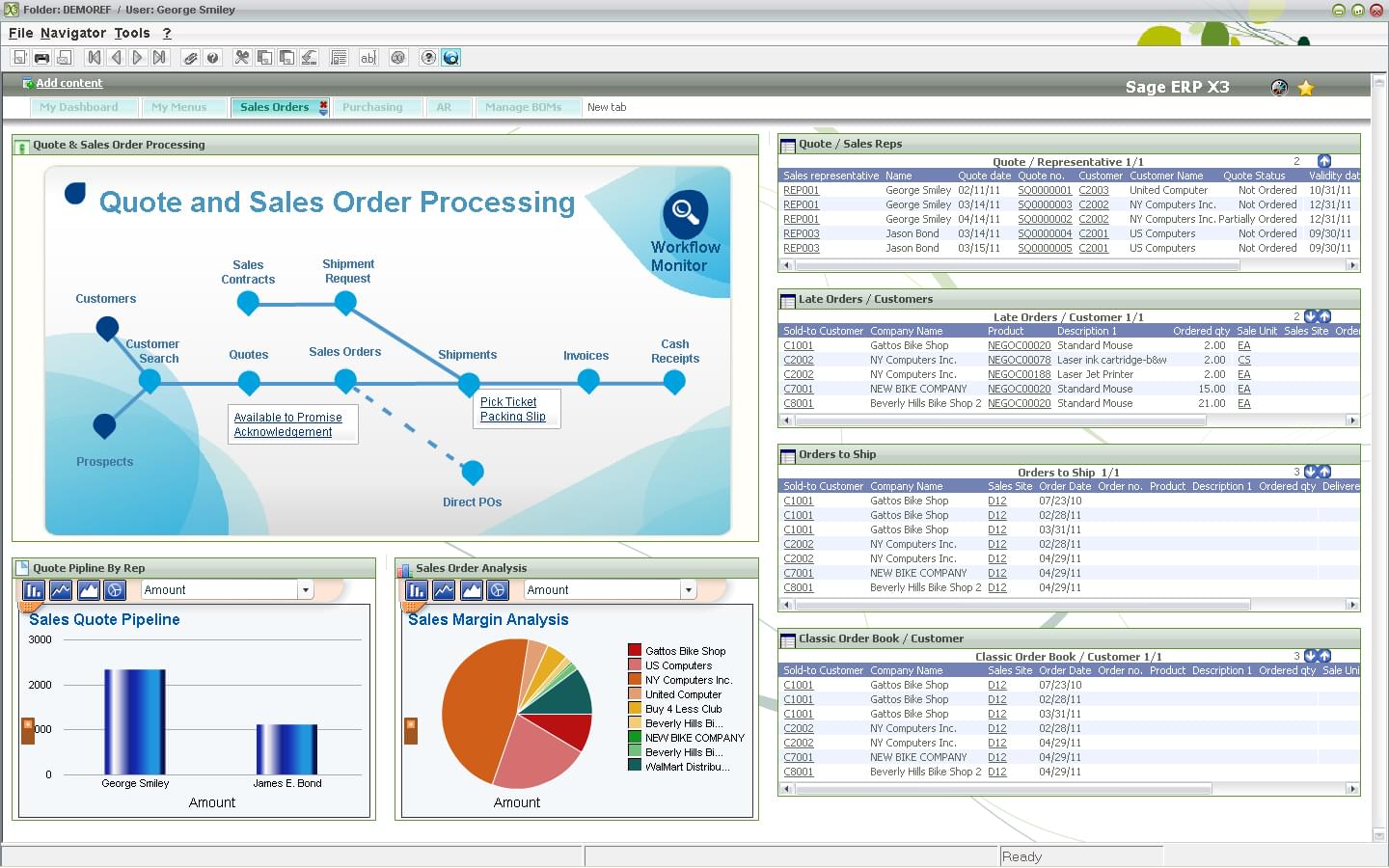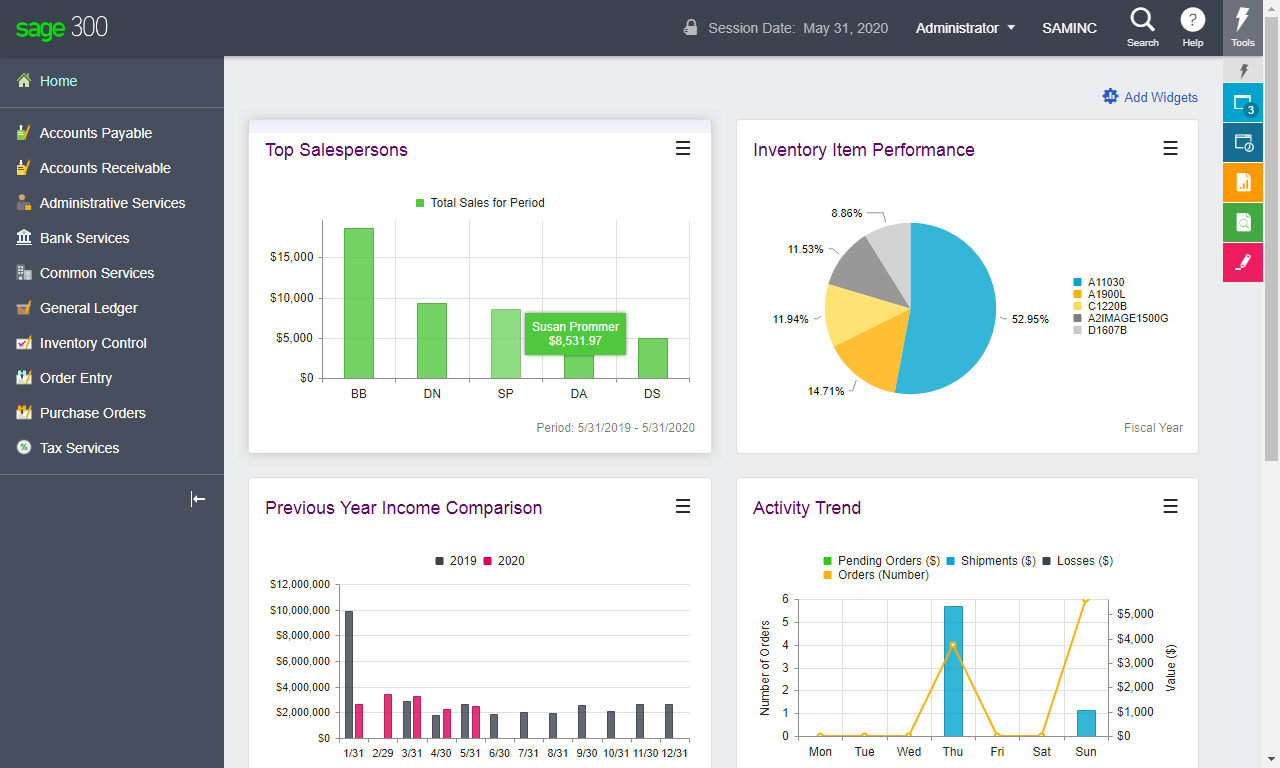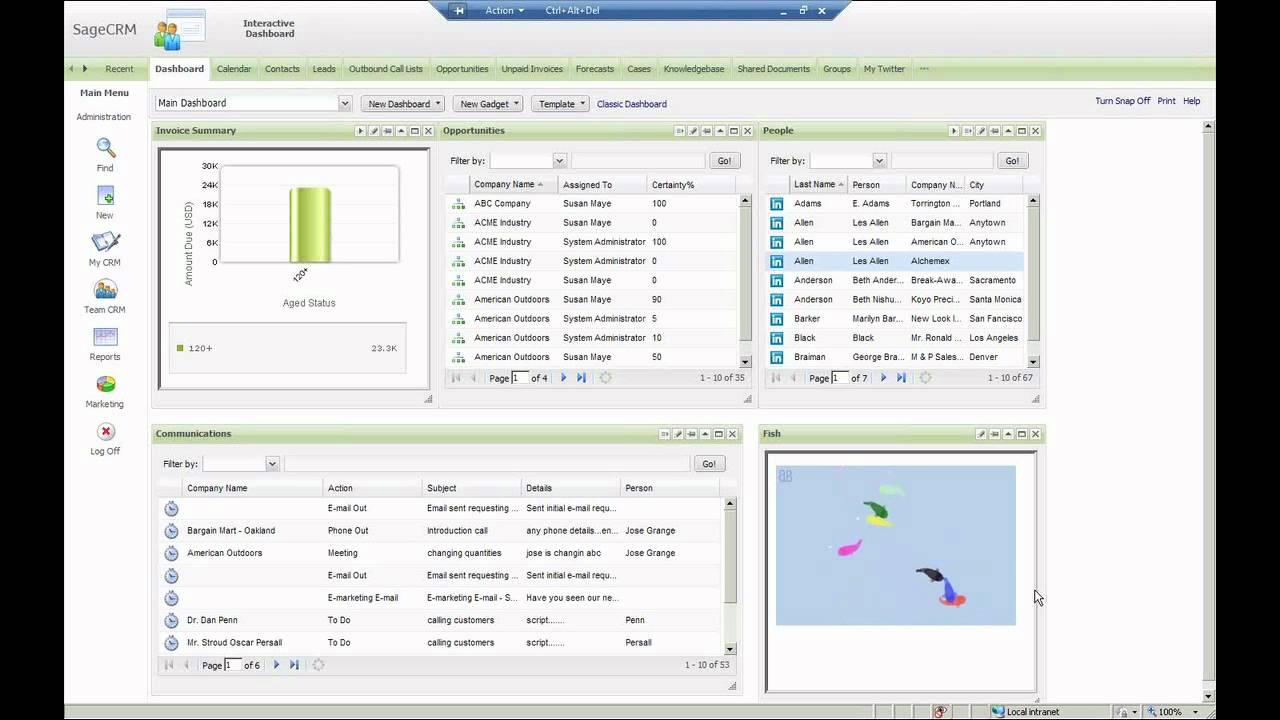Tentu, berikut adalah artikel tentang sistem ERP Sage yang ramah SEO, mudah dibaca, dan bebas plagiarisme. Artikel ini ditulis untuk tingkat kelas 8 dan 9, menggunakan sudut pandang kedua orang, dan mencakup tabel, kesimpulan, dan FAQ.
Judul: Sage ERP: Your Guide to Business Management Software
Kata Kunci: Sage ERP, business management software, ERP system, small business software, accounting software, inventory management, customer relationship management (CRM), supply chain management, enterprise resource planning, Sage 100, Sage 300, Sage X3, Sage Intacct, cloud ERP, on-premise ERP, Sage ERP benefits, Sage ERP cost, Sage ERP implementation, Sage ERP features, Sage ERP alternatives.
Introduction: Streamlining Your Business with Sage ERP
So, you’re running a business, maybe a small one, maybe something growing quickly. You’re juggling orders, invoices, inventory, and maybe even a team. Feeling overwhelmed? That’s where Sage ERP comes in. Sage ERP (Enterprise Resource Planning) isn’t just software; it’s a powerful tool that can help you manage every aspect of your business in one place. Think of it as a central command center for all your business operations.
This guide will walk you through what Sage ERP is, how it works, its various versions, the benefits you can expect, and what you need to consider before implementing it. We’ll keep it simple, easy to understand, and relatable to your everyday business needs.
Understanding Sage ERP: More Than Just Accounting Software
Many people associate Sage ERP with accounting software, and that’s a fair starting point. It does handle accounting brilliantly – tracking income, expenses, and generating financial reports. However, Sage ERP is much more comprehensive. It integrates various business functions, providing a holistic view of your operations. Imagine having all your crucial data – sales, inventory, customer information, and more – neatly organized and accessible in one system. That’s the power of Sage ERP.
Key Features of Sage ERP Systems:
Sage offers a range of ERP systems tailored to different business sizes and needs. Here are some core features you’ll find across many of their offerings:
- Accounting: Manage accounts payable, accounts receivable, general ledger, and financial reporting.
- Inventory Management: Track stock levels, manage orders, and predict future needs. Say goodbye to stockouts and overstocking!
- Customer Relationship Management (CRM): Manage customer interactions, track sales opportunities, and improve customer satisfaction.
- Supply Chain Management: Optimize your supply chain by tracking orders, managing suppliers, and ensuring timely delivery.
- Reporting and Analytics: Gain valuable insights into your business performance through customizable reports and dashboards.
- Project Management: (In some versions) Track projects, manage budgets, and monitor progress.


| Feature | Description | Benefit |
|---|---|---|
| Accounting | Tracks income, expenses, and generates financial reports. | Accurate financial statements, improved tax compliance. |
| Inventory | Manages stock levels, orders, and predicts future needs. | Reduced stockouts, optimized inventory levels, cost savings. |
| CRM | Manages customer interactions and tracks sales opportunities. | Improved customer relationships, increased sales. |
| Supply Chain | Optimizes the supply chain by tracking orders and managing suppliers. | Improved efficiency, timely deliveries, reduced costs. |
| Reporting | Provides customizable reports and dashboards for business performance. | Data-driven decision making, improved business strategy. |
Different Sage ERP Versions: Finding the Right Fit
Sage offers several ERP solutions, each designed for specific business sizes and needs. Some popular options include:
- Sage 100: Ideal for small and medium-sized businesses (SMBs) seeking comprehensive functionality.
- Sage 300: A robust solution for mid-sized businesses with complex operations.
- Sage X3: Scalable ERP for larger enterprises with global operations.
- Sage Intacct: Cloud-based ERP system known for its strong financial management capabilities.
Choosing Between Cloud-Based and On-Premise ERP:
You’ll need to decide between a cloud-based (Software as a Service or SaaS) and an on-premise solution.
-
Cloud-based ERP: Hosted on Sage’s servers, accessible from anywhere with an internet connection. Generally more affordable with lower upfront costs, automatic updates, and reduced IT maintenance.
-
On-premise ERP: Installed and maintained on your own servers. Offers greater control over your data and security but requires significant upfront investment and ongoing IT maintenance.
| Feature | Cloud-Based ERP | On-Premise ERP |
|---|---|---|
| Cost | Lower upfront costs, subscription-based pricing | Higher upfront costs, ongoing maintenance |
| Accessibility | Accessible from anywhere with internet access | Accessible only from within your network |
| Maintenance | Managed by Sage | Managed by your IT team |
| Security | Shared responsibility with Sage | Full responsibility for security |
Benefits of Implementing Sage ERP:
Implementing Sage ERP offers numerous benefits that can significantly improve your business operations:
- Improved Efficiency: Automate tasks, reduce manual data entry, and streamline workflows.
- Better Decision Making: Access real-time data and generate insightful reports to inform your strategies.
- Enhanced Collaboration: Improve communication and collaboration between departments.
- Reduced Costs: Optimize processes, reduce errors, and minimize waste.
- Increased Profitability: Improve efficiency, reduce costs, and boost sales.
- Scalability: Easily adapt to changing business needs as your company grows.
Cost of Sage ERP:
The cost of Sage ERP varies depending on the version you choose, the number of users, and the modules you require. It’s best to contact Sage directly for a customized quote. However, be prepared for a significant investment, particularly with on-premise solutions. Cloud-based options generally offer more affordable monthly subscriptions.
Implementing Sage ERP: A Step-by-Step Guide:
Implementing Sage ERP is a significant undertaking. Here’s a simplified overview of the process:
- Needs Assessment: Identify your business needs and choose the right Sage ERP version.
- Planning: Develop a detailed implementation plan, including timelines and resources.
- Data Migration: Transfer your existing data to the new system.
- Training: Train your employees on how to use the new system.
- Go-Live: Launch the new system and monitor its performance.
- Post-Implementation Support: Ongoing support and maintenance are crucial for long-term success.
Alternatives to Sage ERP:
While Sage ERP is a popular choice, several other ERP systems are available. Some popular alternatives include Microsoft Dynamics 365, SAP Business One, and NetSuite. The best option for you will depend on your specific needs and budget.
Conclusion: Empowering Your Business with Sage ERP
Sage ERP is a powerful tool that can transform your business operations. By centralizing your data, automating tasks, and providing valuable insights, Sage ERP can help you achieve greater efficiency, profitability, and growth. However, remember that successful implementation requires careful planning, adequate training, and ongoing support. Weigh the benefits against the costs and choose the version that best suits your specific needs. Don’t hesitate to seek professional assistance during the implementation process.
Frequently Asked Questions (FAQ):
-
Q: How much does Sage ERP cost?
A: The cost varies greatly depending on the version, number of users, and modules. Contact Sage directly for a quote. -
Q: Is Sage ERP suitable for small businesses?
A: Yes, Sage offers various versions tailored to businesses of all sizes, including small businesses. Sage 100 is a popular choice for smaller companies. -
Q: How long does it take to implement Sage ERP?
A: Implementation time varies depending on the complexity of your business and the chosen version. It can range from a few weeks to several months. -
Q: What kind of training is provided with Sage ERP?
A: Sage typically provides training resources, including online tutorials, documentation, and potentially on-site training. -
Q: What if I have technical problems after implementation?
A: Sage offers various support options, including phone support, online resources, and potentially on-site support contracts. -
Q: Can I integrate Sage ERP with other software I’m using?
A: Yes, Sage ERP integrates with many other business applications through APIs and third-party integrations. -
Q: What if my business grows significantly? Can Sage ERP scale with me?
A: Sage offers different versions to accommodate growth. You can upgrade to a more powerful version as your needs evolve.
This article provides a comprehensive overview of Sage ERP. Remember to conduct thorough research and consider your specific business requirements before making a decision.

